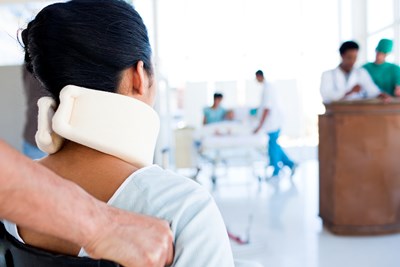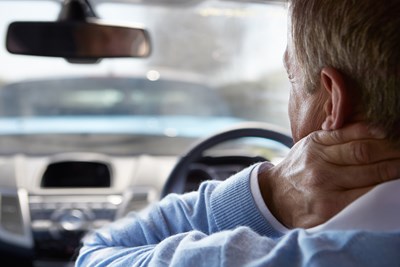Whiplash, named because it is caused by a rapid, whip-like movement of the neck, causes pain and stiffness, along with headaches. Automobile accidents are its most common cause, closely followed by sporting injuries, although trauma from other things like physical abuse can also result damage. Although symptoms of whiplash can be chronic, most people recover with proper medical care, although healing still takes a few months. The best course of action for whiplash, as in most things, is taking measures to prevent it in the first place.
General Protection
Whiplash prevention, however, is easier suggested than done. There is virtually no way to 100% guarantee you will never get whiplash. Keeping your neck in shape can help, though. Do strengthening exercises, so the muscles are better able to resist injury as well as heal. Keeping the neck limber through stretches allows muscles to be more used to greater range of movement, so being flung so far forward and backward isn’t such a strain. This is especially important if you have already sustained neck injuries or your work tends to require you remain in the same position for long periods of time.
Car Accidents
You are more likely to get whiplash in accidents when you are rear ended. The Whiplash Prevention Campaign attests that the right seat and head restraint are the most crucial safety features for preventing whiplash. Both must be properly adjusted to your size for effectiveness; as the body moves the head moves too, reducing hyperextension. Each vehicle’s seat and head restraint are rated according to efficaciousness.
Optimal safety features are the best chance of avoiding whiplash in car accidents. Seatbelts and airbags are also intended to help, but airbags can sometimes cause more harm than good, when an airbag coming towards you forces your head farther backward than your neck is inclined to go. This makes appropriate head restraint height even more important. According to experts, the top of the headrest should be even with the top of your ears and close to the back of your head. Recline your seat minimally, as there should only be about two inches between the head restraint and the back of your head, and reclining increases this distance.
Sports Injuries
Like car accidents, whiplash as a sports injury tends to be a result of getting hit from behind. Players of contact sports, like football or rugby, are especially at risk. This makes being in good shape even more important for athletes, quite literally from head to toe. Protective gear designed for the sport should always be worn—even in practice sessions—since their sole purpose is to keep players safe. This safety equipment should be the right size to ensure the right fit, and thereby maximum security.



